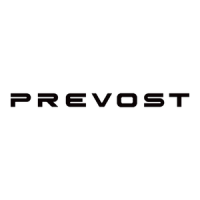Section 03: FUEL SYSTEM
PA1553
4
2. FUEL LINES AND FLEXIBLE HOSES
Make a visual check for fuel leaks at all engine-
mounted fuel lines and connections and at the
fuel tank suction and return lines. Since fuel
tanks are susceptible to road hazards, leaks in
this area may best be detected by checking for
accumulation of fuel under the tank. Engine
performance and auxiliary equipment is greatly
dependent on the ability of flexible hoses to
transfer lubricating oil, air, coolant and fuel oil.
Diligent maintenance of hoses is an important
step in ensuring efficient, economical and safe
operation of engine and related equipment.
Check hoses daily as part of the pre-start-up
inspection. Examine hoses for leaks and check
all fittings, clamps and ties carefully. Make sure
that the hoses are not resting on or touching
shafts, couplings, and heated surfaces,
including exhaust manifolds, any sharp edges or
other obviously hazardous areas. Since all
machinery vibrates and moves to a certain
extent, clamps and ties can fatigue with age. To
ensure continued proper support, inspect
fasteners frequently and tighten or replace them
as necessary. Refer to the schematic diagram of
the fuel system (Fig. 1).
CAUTION
Oil level above the dipstick full mark or a
decrease in lube oil consumption may indicate
internal fuel leaks. Check oil level frequently.
3. FUEL VALVES
Manual shut-off valves on engine fuel-supply
line are located on the R.H. side of engine
compartment (Fig. 2). A manual shut-off valve is
located at the inlet side of the primary fuel filter
(fuel filter/water separator, if vehicle is so
equipped) under the starter. Another manual
shut-off valve is located at the outlet side of the
secondary fuel filter, under the air compressor.
4. FILTERS AND WATER SEPARATOR
The fuel system is equipped with primary and
secondary fuel filters for additional protection of
the injectors. A fuel-filter/water-separator may
be installed in primary fuel-filter location, to
prevent water infiltration in engine fuel system
(Fig. 2). It should be drained periodically, or
when the water separator telltale light on the
dashboard illuminates.
To drain, loosen positive seal drain valve below
separator, and tighten after water has been
flushed out.
FIGURE 2: MANUAL SHUT-OFF VALVES 03060
NOTE
The operating conditions and cleanliness of
type of fuel used determine the service
intervals of the filter/water separator element
and the secondary fuel filter cartridge.
4.1 FUEL FILTER/WATER SEPARATOR
SERVICING
The fuel filter/water separator is located on the
starter side of the engine, below the starter. The
water separator must be drained periodically or
when the telltale light on the dashboard
illuminates.
Replace the water separator element as follows:
1. Drain the fuel filter/water separator as stated
previously.
2. With engine "OFF" and engine fuel supply
line valves closed; remove the filter
element/bowl assembly from cover (for
valve location, see "3. FUEL VALVES" in
this section).
3. Separate bowl from filter element. Clean
bowl and O-ring groove.
NOTE
Bowl is reusable, do not discard.

